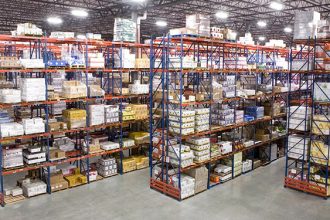The Importance Of Horizontal Clearance In Seismic Storage Rack Installations

Everything moves when an earthquake occurs. That includes the ground, the walls and support columns within a warehouse or distribution center, and the storage rack systems installed inside those structures. To minimize the risk of injury to any persons working in proximity to the rack, as well as to reduce the chance of the building and the rack colliding during a significant seismic event, RMI’s ANSI MH16.1: Specification for the Design, Testing and Utilization of Industrial Steel Storage Racks calls for a certain amount of horizontal clearance (also called seismic separation) between the two.
As detailed in Section 2.6.6 of RMI/ANSI MH16.1, racks installed in facilities located in regions that have been designated Seismic Design Category D or above must be installed with adequate seismic separation between braced and unbraced sections of the rack and the building components. The amount of separation is determined by a series of engineering calculations performed during the initial racking system design phase.
Based on the installation’s geographic location, a professional rack design engineer can estimate how much the rack and building structures are each going to move during a seismic event. The result of those calculations determines a safe separation distance from the building’s structural columns for placement of the rack system.
Rack bays and building columns should be separated by a minimum distance equivalent to 5% of the rack height in the more flexible down-aisle direction (parallel to the storage rack shelf beams), and 2% of the rack height in the cross-aisle direction (perpendicular to the rack access openings). This distance creates a perimeter of empty space around each building column to reduce the risk of it being impacted by a rack during an earthquake. The spacing also enhances the structural safety of the facility and the personal safety of its occupants should a seismic event occur.
Want to learn more about seismic design and rack safety? RMI includes a section on Seismicity in its list of Frequently Asked Questions.


